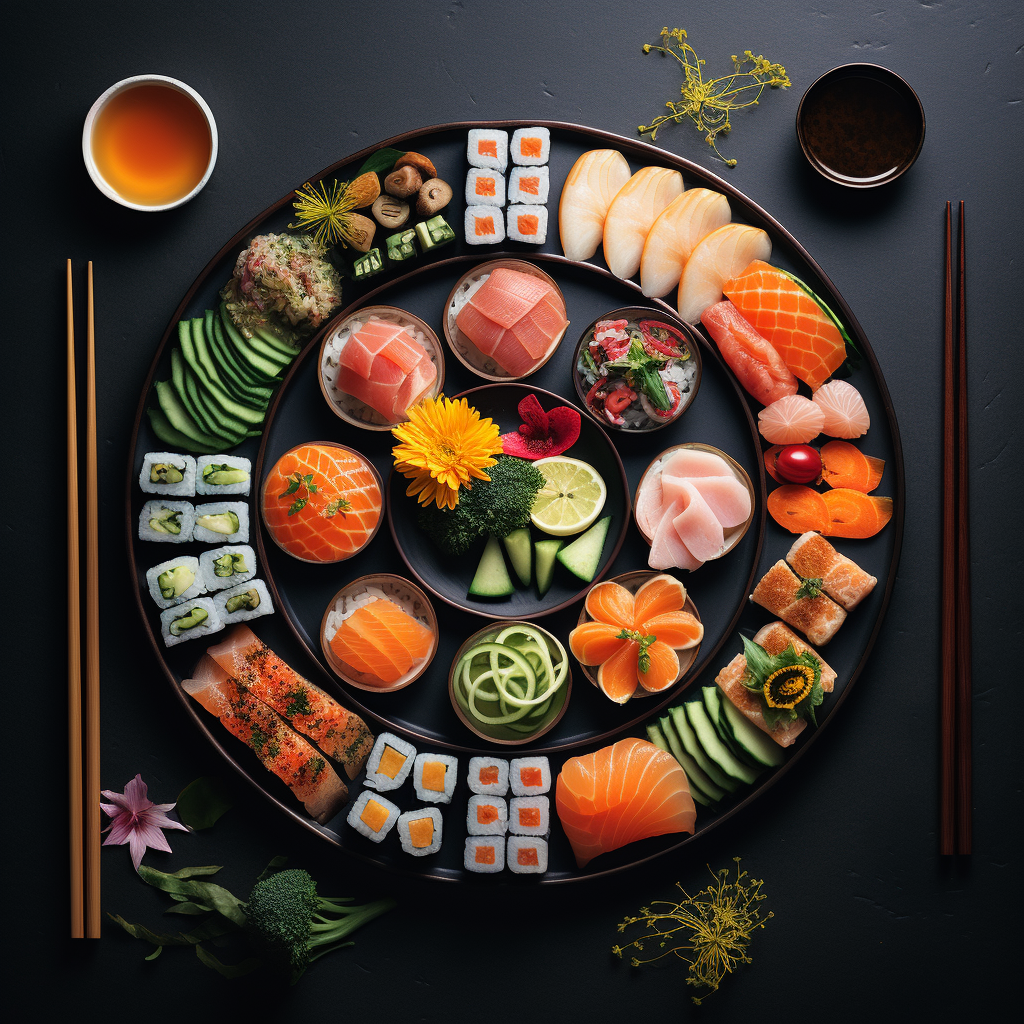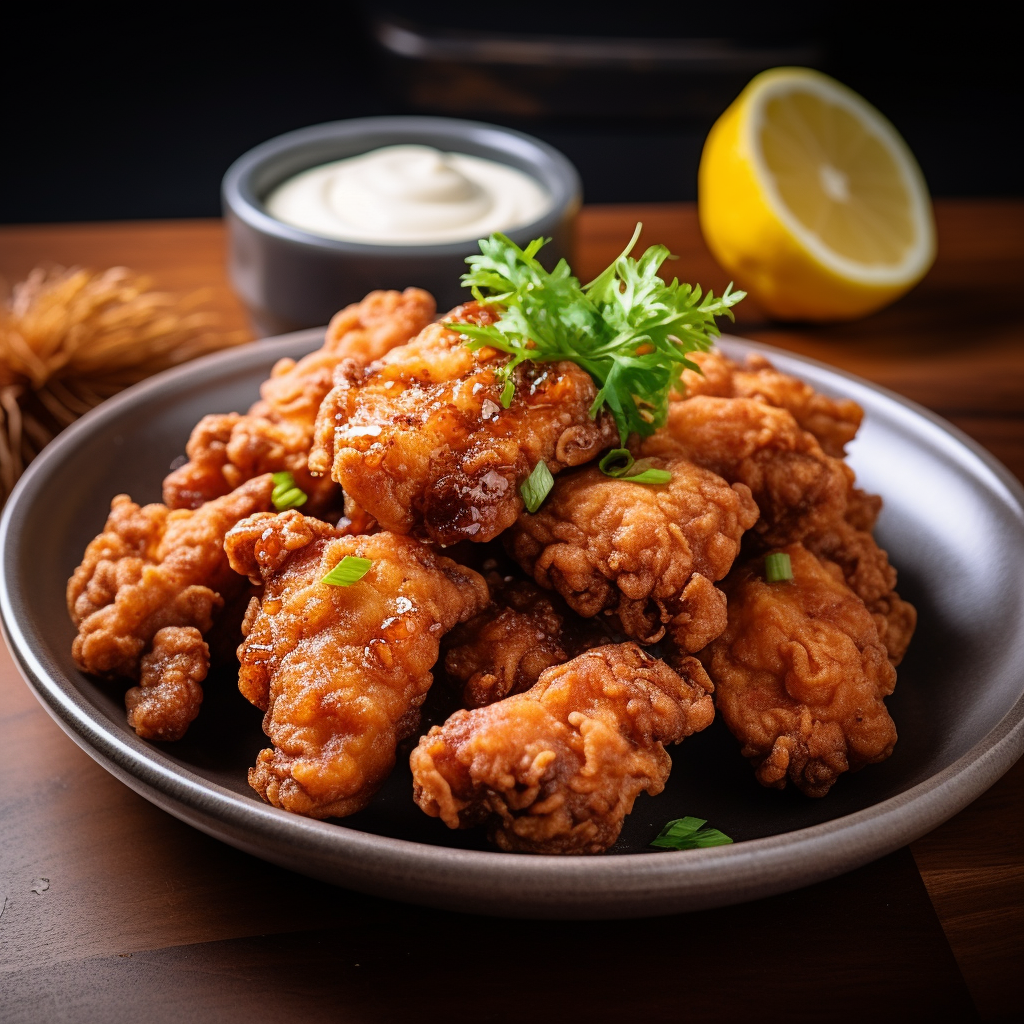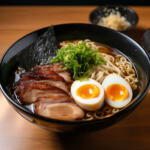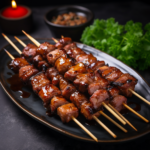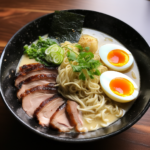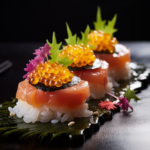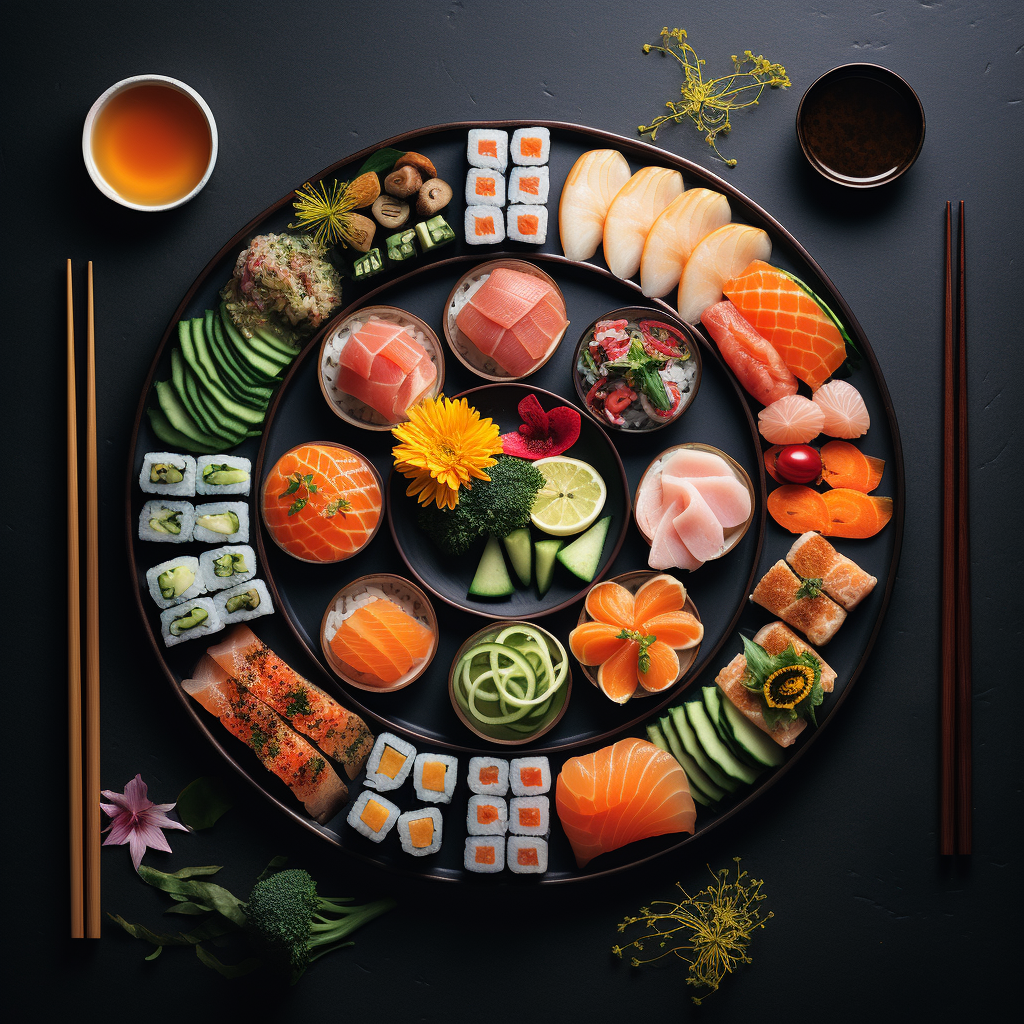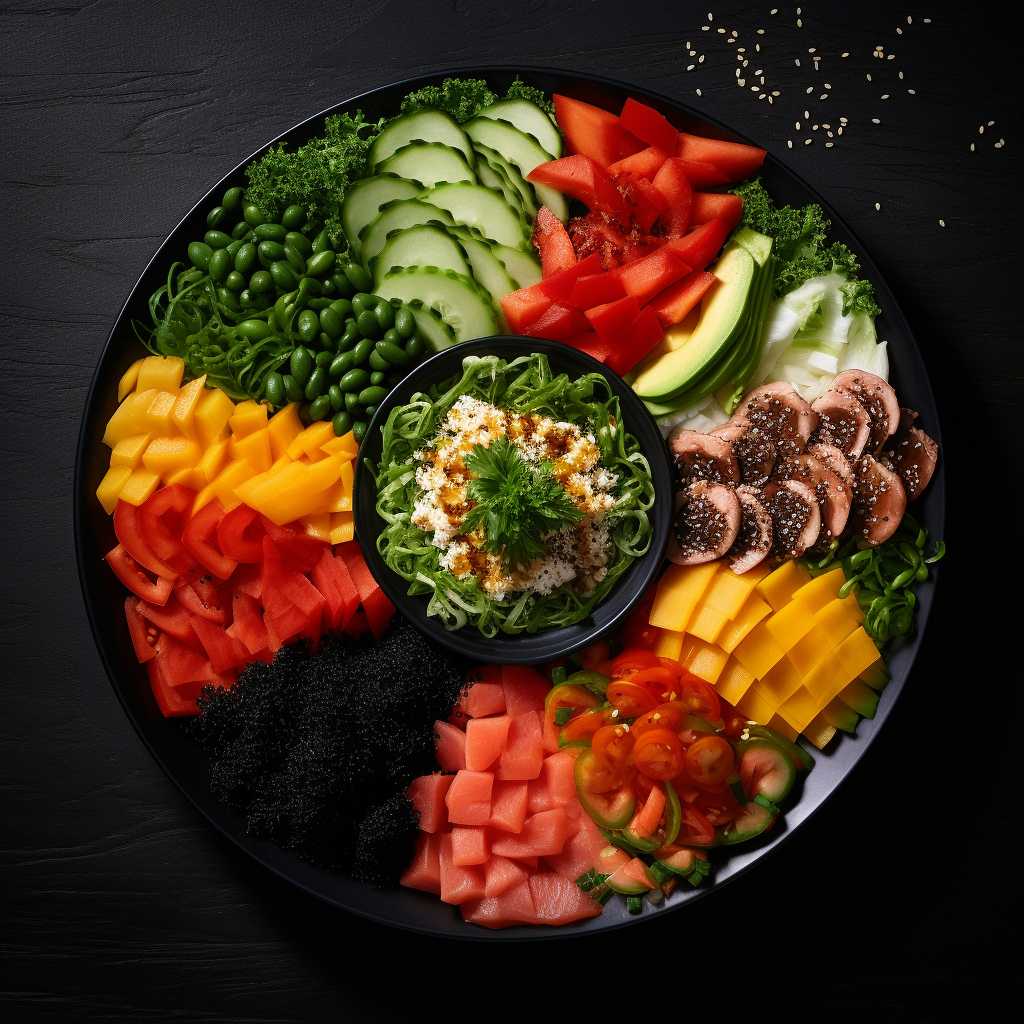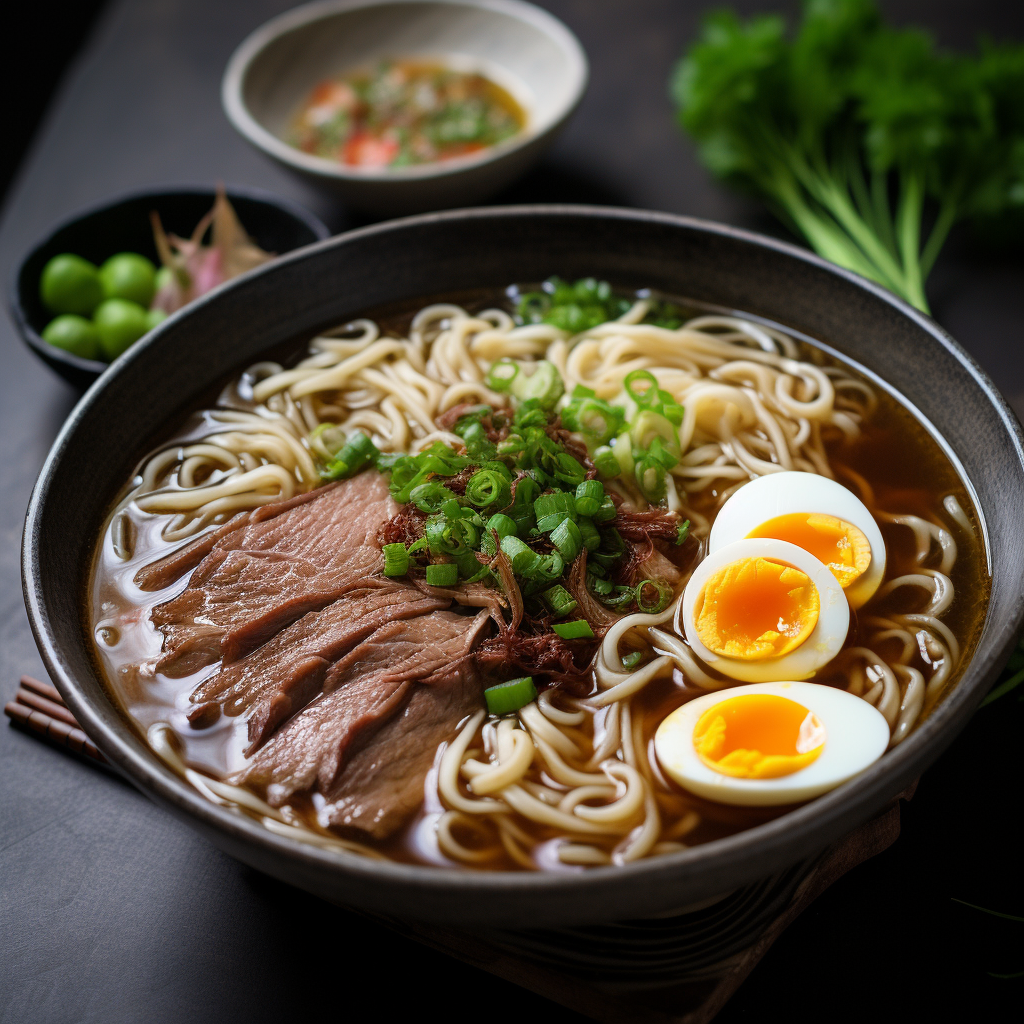Welcome to the World of Karaage
The culinary world is as vast as it is delicious, and one dish that certainly stands as representative of Japan’s delightful cuisine is Karaage. Let’s go on a journey to explore the art behind this Japanese-style fried chicken, marinated in soy sauce and other seasonings, then deep-fried to perfection.
The History of Karaage
Karaage, a popular Japanese dish, is essentially a type of fried chicken made with various cuts of meat such as thigh, breast, or wings. The term “karaage” is derived from the Chinese word “kā-lǎ-jiǎ” which means “family fried,” reflecting the dish’s historical connections to Chinese cooking techniques introduced to Japan.
The preparation process for karaage involves marinating the chicken pieces in a special blend of soy sauce, sake or mirin (sweet rice wine), and ginger, creating a flavorful, umami-rich taste. The marinated chicken is then coated in potato starch or wheat flour before being deep-fried until golden brown and crispy.
Karaage holds significant cultural importance in Japan, often being served during celebratory events, family gatherings, and as a popular street food or izakaya (Japanese tapas-style bar) menu item. It is also commonly found in bento boxes, showcasing its versatility and popularity within Japanese cuisine.
Additionally, karaage has made its way into the culinary landscape of other countries, with variations increasingly appearing in restaurants and home kitchens worldwide. Some fusion adaptations include adding spices for heat or using different types of breading for texture, allowing this beloved Japanese dish to evolve while maintaining its deep cultural roots.
Ingredients and Cooking Method
The true secret to achieving the quintessential taste and texture of karaage lies in the carefully selected ingredients and well-executed cooking method. These aspects work together harmoniously to bring out the desired umami flavors and delightful crunch in each piece of fried chicken.
-
Quality ingredients: The choice of fresh, high-quality chicken meat is essential for creating a delicious karaage. Chicken thighs are often preferred for their juicy and tender texture, while some variations may use breast meat for a leaner option. The marinade, composed mainly of soy sauce, sake or mirin, and ginger, should also be prepared with authentic, high-grade ingredients to ensure an optimally flavorful outcome.
-
Marinating process: Allowing the chicken to marinate for an adequate amount of time (generally 30 minutes to 2 hours) is critical to ensuring the absorption of umami-rich flavors from the soy sauce and sake or mirin. This also enables the ginger to infuse its refreshing notes into the chicken, balancing the overall taste profile of the dish.
-
Drying the chicken: Before coating the marinated chicken in potato starch or wheat flour, it is essential to remove any excess moisture by patting the chicken dry with paper towels. This extra step helps prevent oil splatters during the frying process and guarantees a crispier exterior by allowing a thin, even coating of starch to adhere to the meat’s surface.
-
Double-frying technique: A vital aspect of karaage’s cooking method is the double-frying technique, which involves first frying the chicken at a lower temperature (around 325-340°F or 165-170°C) for approximately 4-5 minutes, followed by a second frying at a higher temperature (around 355-375°F or 180-190°C) for about 1-2 minutes. The initial low-temperature frying cooks the chicken through while creating a light crust, while the subsequent higher-temperature frying gives the exterior its characteristic crunch and golden-brown hue.
By paying close attention to these details, one can master the true art of crafting authentic and mouthwatering karaage. The perfect balance of well-seasoned, tender chicken and an irresistibly crisp exterior is achievable through diligent practice and a passion for preserving the culinary heritage of this beloved Japanese dish.
Preparing the Perfect Marinade
Preparing the perfect karaage marinade is essential to achieving the signature umami taste that defines this popular Japanese dish. By blending high-quality ingredients in the correct proportions, you can create a marinade that infuses the chicken with the ideal balance of flavors, allowing it to shine in each delicious, crispy bite.
Here’s a step-by-step guide to making the perfect karaage marinade:
- Gather your ingredients:
- 1/4 cup (60 ml) soy sauce: Opt for naturally-brewed soy sauce, also known as “tamari” or “shoyu,” to achieve a richer, fuller flavor.
- 2 tablespoons (30 ml) sake or mirin: These traditional Japanese beverages contribute to the marinade’s depth and complexity. When using sake, ensure it is of good quality; if you don’t have mirin on hand, use sake with a touch of granulated sugar for added sweetness.
- 1 tablespoon (15 ml) grated ginger: Freshly grated ginger imparts a refreshing, aromatic note to the marinade.
- 1-2 cloves garlic, minced: Garlic adds an extra layer of flavor to complement the soy sauce, sake or mirin, and ginger.
- Optional ingredients: You can customize your marinade by incorporating various spices, herbs, or aromatics, such as grated onion, green onions, sesame oil, or white pepper to suit your taste preferences.
-
Combine the ingredients: In a bowl, mix together the soy sauce, sake or mirin, grated ginger, and minced garlic, ensuring the ingredients are well-incorporated. If using any optional ingredients, add them to the mixture and stir well.
-
Adjust the flavors: Taste the marinade and make any necessary adjustments. You can modify the flavor balance by adding more soy sauce for saltiness, sake or mirin for sweetness, or ginger and garlic for additional complexity. Remember that karaage is meant to have a robust umami taste, so it’s essential to strike the right equilibrium among these elements.
-
Marinate the chicken: Once you’re satisfied with the marinade, add your choice of chicken pieces (such as thighs, breasts, or wings) to the bowl. Ensure each piece is well-coated with the marinade, and let it rest for at least 30 minutes to 2 hours in the refrigerator. This time allows the chicken to absorb the umami flavors, tenderize, and become infused with the aromatic qualities of the marinade.
-
Reserve excess marinade (optional): If you’d like to prepare a dipping sauce for your finished karaage, set aside some of the marinade before coating the chicken. You can later simmer it in a small saucepan to reduce and thicken it, resulting in a delightful accompaniment to your fried chicken.
By following these guidelines, you can confidently prepare a flavorful karaage marinade that showcases the genuine essence of this cherished Japanese dish. With practice, patience, and a discerning palate, you will soon be able to craft your very own perfect karaage marinade to share with family and friends. For more information on making authentic karaage at home, don’t hesitate to explore our collection of helpful resources.
Deep-Frying to Perfection
Achieving the perfect balance of a crispy exterior and succulent, tender interior when deep-frying karaage chicken requires precision and attention to detail. This step is critical to nailing the authentic taste and texture this beloved Japanese dish is known for. Here are some essential pointers for mastering the deep-frying process:
-
Choose the right oil: Select an oil with a high smoke point, such as vegetable oil, canola oil, or peanut oil, for deep-frying. These oils help attain an even, crispy texture while preventing the formation of off-flavors.
-
Heat the oil to the appropriate temperature: To achieve the perfect crisp without overcooking or undercooking the chicken, it’s crucial to maintain the correct oil temperature. Heat the oil to around 340°F (170°C) for the initial frying and 375°F (190°C) for the second frying. To monitor the oil temperature accurately, use a deep-frying thermometer or an instant-read thermometer – this is a vital investment when deep-frying karaage.
-
Pat the chicken dry: Before dredging the marinated chicken in potato starch or wheat flour, ensure it is thoroughly dry by patting each piece with paper towels. This step helps create a thin, even coat of starch around the chicken, reducing oil absorption and ensuring a crisp exterior.
-
Coat the chicken evenly: Dredge the marinated, dried chicken pieces in potato starch or wheat flour, shaking off any excess. This coating aids in the development of a delightfully crunchy texture during frying. For an even crispier result, you can consider double-dredging the chicken, which involves coating it once in starch, dipping it back into the marinade, and then coating it again in starch.
-
Fry the chicken in batches: Avoid overcrowding the fryer by frying the karaage in small batches. This practice ensures proper browning and even cooking for each piece. Overcrowding can cause the temperature of the oil to drop suddenly, resulting in greasy, undercooked chicken.
-
Double-fry the chicken: As previously mentioned, the double-frying technique is essential for achieving crispy, perfectly cooked karaage. Fry the chicken at the lower temperature (340°F or 170°C) for approximately 4-5 minutes, then drain it on a wire rack or paper towel-lined plate. Allow the chicken to rest for a few minutes before frying again at the higher temperature (375°F or 190°C) for about 1-2 minutes, or until it develops a beautiful golden-brown hue. This method ensures a tender, moist interior while delivering a delectable, crunchy exterior.
-
Drain and serve: Once the second frying is complete, remove the cooked karaage from the oil, allowing any excess oil to drip off. Place the fried chicken on a wire rack or paper towel-lined plate to drain further, then transfer it to a serving plate. For best results, serve karaage immediately to enjoy its optimal flavor, crispiness, and texture.
By paying close attention to these details and practicing patience, you can perfect the art of deep-frying karaage chicken. To learn even more about the intricacies of this remarkable Japanese dish, check out our helpful resources that delve into the history and variations of karaage.
Enjoy Your Homemade Karaage!
We hope you have enjoyed this culinary journey through the Art of Japanese Karaage. Feel free to leave your comments below about your own experiences of creating this delicious dish. Don’t forget to subscribe to our newsletter for more exciting insights into the world of culinary delights!

